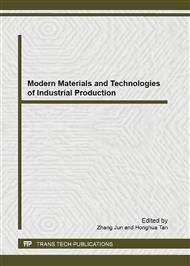p.120
p.126
p.131
p.135
p.140
p.146
p.152
p.157
p.163
The Characterization of Stainless Steel Particles under the Sliding Motion
Abstract:
The purpose of this research is to study the characteristic of stainless steel particles under the sliding motion. The effects of effective stress and relative velocity on the characteristic of stainless steel wear particles were studied. The is aiming to monitor possible failure mode in various machine elements, especially in the case of a closed system or contamination sensitive processes such as the hard disk drive manufacturing process, etc. The research results showed that the particles smaller than 1 micron generated from material surface asperities. Moreover, the stress magnitude and velocity have the influence on the size and shape of the stainless steel particles, respectively. The increase in stress and speed will result in a larger particle size and more slender shape, respectively. It can be seen that the size and the shape of wear particles vary according to the sliding conditions. Therefore, the results could be used to identify the process in which the contaminated particles were generated for sliding motion.
Info:
Periodical:
Pages:
140-145
Citation:
Online since:
September 2013
Authors:
Price:
Сopyright:
© 2013 Trans Tech Publications Ltd. All Rights Reserved
Share:
Citation:


